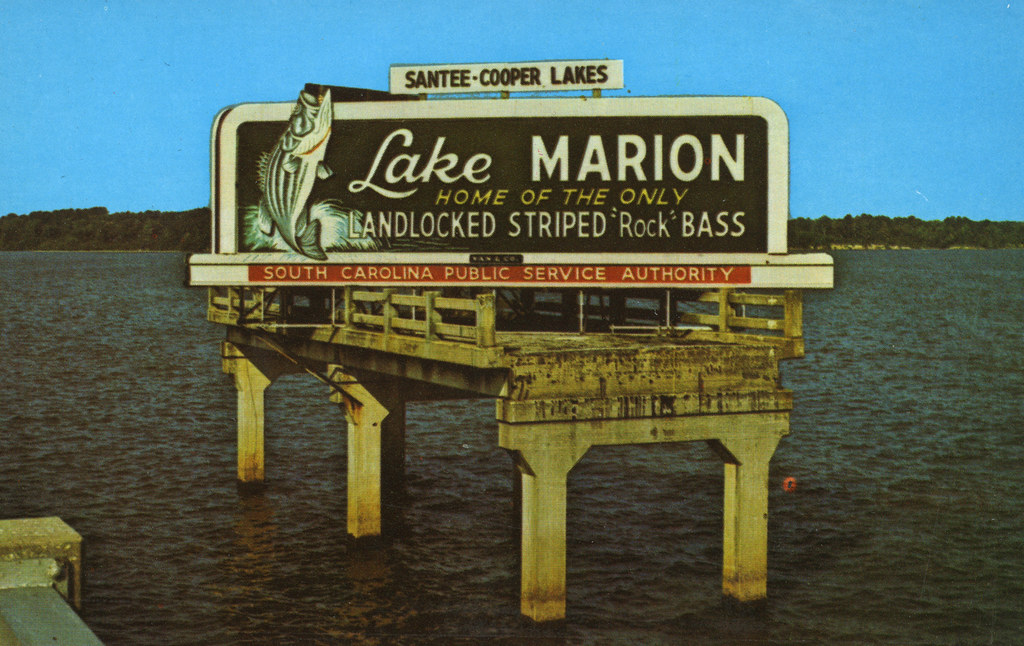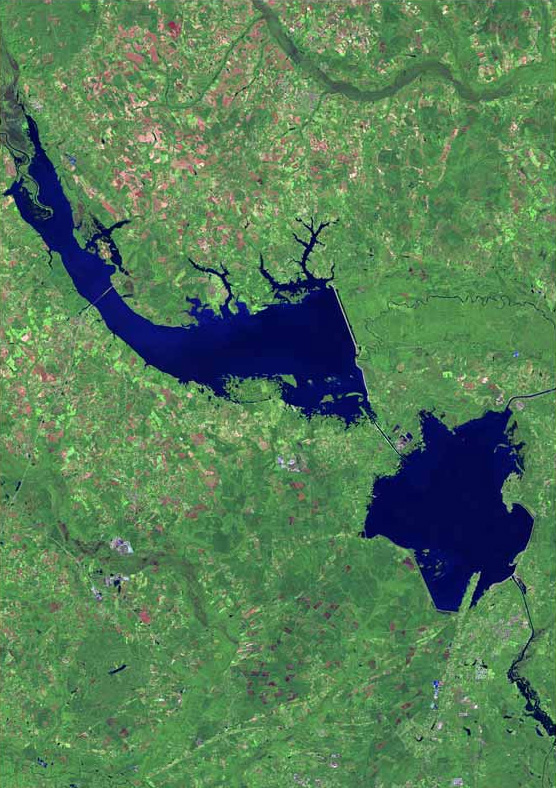Lake Marion: South Carolina’s Inland Sea

Lake Marion, the largest lake in South Carolina, spans 110,600 acres and is situated in the state’s coastal plain region. Named after Revolutionary War General Francis Marion, the lake is surrounded by Clarendon, Calhoun, Berkeley, Orangeburg, and Sumter counties.
The lake’s headwaters extend upstream to where the Wateree and Congaree Rivers converge, forming the wildlife-rich Sparkleberry Swamp, characterized by its seasonally flooded, forested wetlands.
Built during the challenging times of the Great Depression, the reservoir supplied hydroelectric power to rural South Carolina and provided much-needed jobs.
Established in the 1940s as part of the Santee Cooper Project, Lake Marion, together with its sister lake, Lake Moultrie, make up the Santee Cooper Reservoir. Both lakes offer an abundance of recreational activities such as fishing, boating, and wildlife watching for both South Carolina residents and visitors alike.
The Santee Cooper Project
The Santee Cooper Project, a collaboration between the federal government and the state of South Carolina, was a groundbreaking effort that led to the construction of two major dams – the Santee Dam and the Pinopolis Dam. These dams impounded the Santee River and the Cooper River, respectively, forming two artificial lakes – Lake Marion and Lake Moultrie.
The project aimed to provide hydroelectric power and stimulate economic growth in South Carolina during the Great Depression. As part of President Franklin D. Roosevelt’s New Deal initiative, the Santee Cooper Project was one of the most ambitious and transformative infrastructure projects of the era, and had a permanent impact on the South Carolina landscape.
The Santee Dam, built across the Santee River, resulted in the formation of Lake Marion. At the same time, the Pinopolis Dam was constructed downstream on the Cooper River, creating Lake Moultrie.

Lake Marion at a Glance
With 511 miles of shoreline and 90,000 acres of surface water spanning 5 different South Carolina counties, Lake Marion is truly impressive. The average depth of the lake is 13.12 feet, reaching a maximum depth of around 76.77 feet.
There are 16 boat ramps, 13 fish attractors, and 3 fishing access locations available for visitors. While there aren’t any fishing loaner tackle locations, one marina offers pumpout services. Santee Cooper owns and manages the lake.
Due to its large size, Lake Marion is also often referred to as South Carolina’s “inland sea”.
Unique Features
The accelerated completion of the Lake Marion project due to World War II meant that the clearing of the lake wasn’t finished when the Lake Marion Dam was closed in November 1941. This left thousands of stumps, dead tree trunks, and live cypress trees submerged in the lake.
These underwater features create fantastic fish habitats for numerous species, including crappie, bream, and catfish. The gently sloping shorelines and backwater sloughs are also home to native aquatic vegetation, which offers a haven for largemouth bass, pickerel, bream, and many other fish species. Plus, of course, alligators.
A 6.5-mile-long Diversion Canal connects lower Lake Marion to Lake Moultrie, creating a sheltered and productive area for fishing enthusiasts. To help boaters navigate the waters, various navigational aids have been placed around the lake.
Fishing Lake Marion
When the Lake Marion Dam was closed, it trapped a founding population of striped bass, which then flourished in the reservoir. Researchers discovered that striped bass could complete their entire life cycle in freshwater, thanks to Lake Marion’s population.
Although the striped bass fishery has faced challenges in recent years, ongoing efforts to rebuild the population have been promising.
Introduced in the mid-1960s, blue catfish and flathead catfish have thrived in the Santee Cooper lakes system. Nowadays, they offer anglers the chance to catch some of the largest freshwater fish they’ll ever encounter.
The largemouth bass and shellcracker fisheries are also popular in the spring, providing even more unique opportunities to catch sizable fish.
Conclusion
Lake Marion is an integral part of South Carolina’s history and a paradise for fishing enthusiasts and nature lovers. Built during the Great Depression, the lake symbolizes American strength and resourcefulness. Its unique features, diverse wildlife, and numerous recreational opportunities make it a must-visit destination for anyone traveling throughout South Carolina.